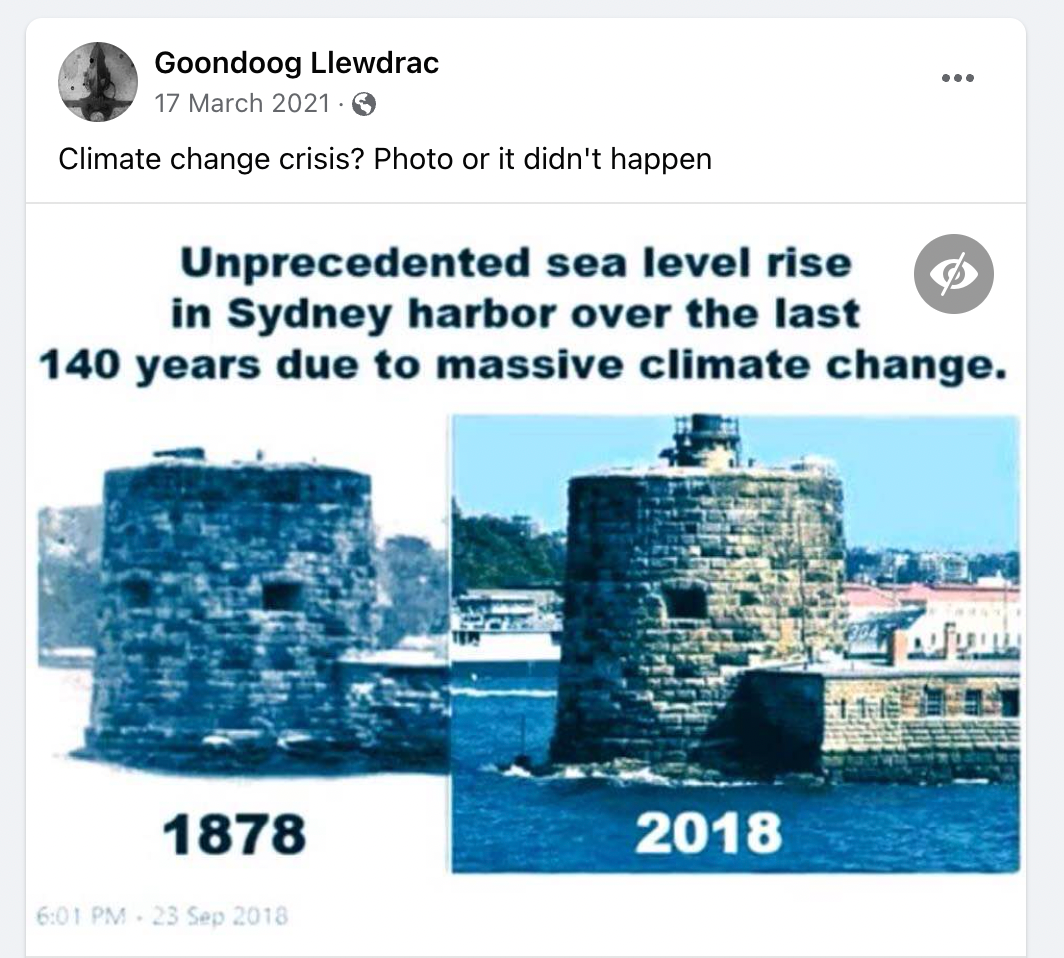Sydney sea level image spread by climate change deniers debunked
It is not possible to gauge sea level rise simply by comparing two images of a location side-by-side, experts said
A widely shared picture that compares two images of a Sydney tourist attraction 140 years apart to cast doubt on rising sea levels has been debunked.
The image shows Fort Denison, part of the Sydney Harbour National Park, in 1878 and 2018 with the caption: “Unprecedented climate change has caused sea level at Sydney Harbour to rise approximately 0.0cm over the past 140 years.”
“Think the photos speak for themselves,” one user said in the comments.
However, it is not possible to gauge sea level rise simply by comparing two images of a location side-by-side, experts told Reuters, The claim has also previously been addressed by Climate Feedback, a worldwide network of scientists sorting fact from fiction in climate change media coverage.
“Sea level is fluctuating on many different timescales from semidiurnal, mixed, and diurnal tidal variations to the long-term sea level change due to climate change,” Beata Csatho, professor and chair of geology at the University at Buffalo and member of the National Aeronautics and Space Administration (NASA) Sea Level Change Team, told Reuters.

“Long-term sea level change is determined by removing all short-term variations from tide-gauge measurements or ocean altimetry records based on a set of models, such as ocean tide, load tide, inverse barometric effect (the pressure the atmosphere pushes the ocean down), etc,” she said.
The images of Fort Denison capture the ocean elevation “only at two particular moments”, Csatho said.
“Imagine that the first picture was taken at high tide and the second one was taken at low tide. The apparent change could look like dropping sea level, while actually, the sea level is slowly rising.
“The complexity of sea level elevation changes necessitated the use of a network of continuously recording tide gauging around the world, now supplemented by satellites that are constantly monitoring sea level,” Prof Csatho added.
The photographs may reflect “different tidal stages”, Gary Griggs, distinguished professor of earth and planetary sciences at the University of California, Santa Cruz, told Reuters.
A global rate of sea-level rise has been recorded since 1993 by orbiting satellites, Prof Griggs said.
“This rate has averaged 3.42 mm/yr but over the past decade or so has increased to 4.77mm/yr over the past 10 years,” he said.
Join our commenting forum
Join thought-provoking conversations, follow other Independent readers and see their replies
Comments
Bookmark popover
Removed from bookmarks